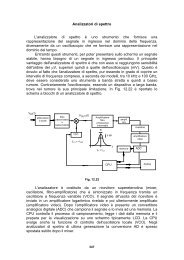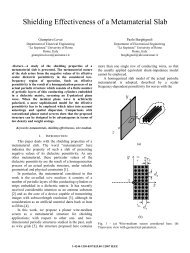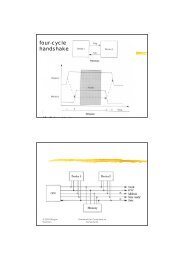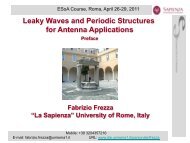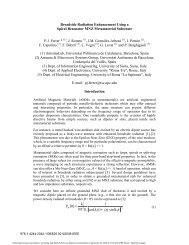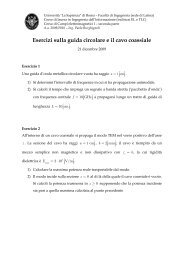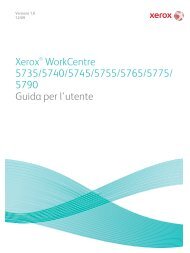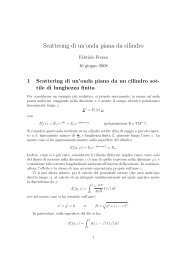Introduction to Traveling-Wave antennas.pdf
Introduction to Traveling-Wave antennas.pdf
Introduction to Traveling-Wave antennas.pdf
You also want an ePaper? Increase the reach of your titles
YUMPU automatically turns print PDFs into web optimized ePapers that Google loves.
5 <strong>Introduction</strong> <strong>to</strong> TWAsufficiently long, the dominant mode field is completely bound, since it has decayed<strong>to</strong> negligible values as it reaches the upper and lower open ends. If the upper portionof the plates is foreshortened, a traveling-wave field of finite amplitude then existsalong the length of the upper open end, and if the dominant NRD guide mode is fast(it can be fast or slow depending on the frequency), power will be radiated away atan angle from this open end.Another possible mechanism is asymmetry. In the asymmetrical NRD guideantenna the structure is first bisected horizontally <strong>to</strong> provide radiation from one endonly; since the electric field is purely vertical in this midplane, the field structure innot altered by the bisection.Figure 4: Asymmetrical Non Radiative Dielectric guideAn air gap is then introduced in<strong>to</strong> the dielectric region <strong>to</strong> produce asymmetry.As a result, a small amount of net horizontal electric field is created, which producesa mode in the parallel-plate air region, which is a TEM mode, which propagates atan angle between the parallel plates until it reaches the open end and leaks away. Itis necessary <strong>to</strong> maintain the parallel plates in the air region sufficiently long that thevertical electric field component of the original mode (represented in the stub guideby the below-cu<strong>to</strong>ff TM 1 mode) has decayed <strong>to</strong> negligible values at the open end.Then the TEM mode, with its horizontal electric field, is the only field left, and thefield polarization is then essentially pure (the discontinuity at the open end does notintroduce any cross-polarized field components).Groove guide is a low-loss open waveguide for millimeter waves, somewhat similar<strong>to</strong> the NRD guide: the dielectric central region is replaced by an air region of greaterwidth. The field again decays exponentially vertically in the regions of narrowerwidth above and below.The leaky-wave antenna is created by first bisecting the offset groove guide horizontally.It also resembles a rectangular waveguide stub loaded. When the stub isoff-centered, the structure will radiate. When the offset is increased, the attenuationconstant α will increase and the beamwidth will increase <strong>to</strong>o. When the stubis placed all the way <strong>to</strong> one end, the result is an L-shaped structure that radiatesvery strongly. In addition, it is found that the value of β changes very little as theEuropean School of Antennas




